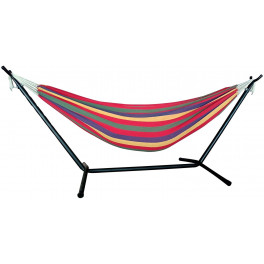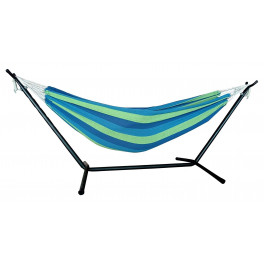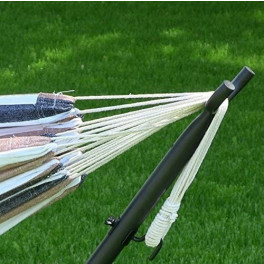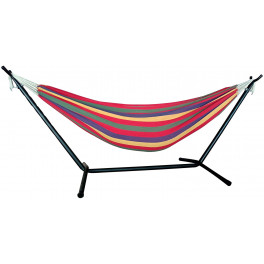You’ve purchased a hammock and now it’s time to hang it. The ideal place is in the shade between two palm trees on the beach, but not everyone leaves near a beach or has palm trees in the back yard. If you are like most people, you’ll have to settle for two stately oaks or maples or perhaps your front porch or back deck. Hammocks can even be hung inside for people who love the comfort of a hammock year round.

Photo by zinkevych on Adobe Stock
Between Two Trees
When hanging a hammock between two trees, make sure the distance between the trees and the trees themselves can accommodate the hammock. The trees need to be at least 6 inches in diameter, and hardwoods such as maple, oak, locust, and hickory are preferred.
For spreader-bar hammocks, you will need approximately 10 to 15 feet between the two trees. Spreader-bar hammocks hang fairly flat, and you will want the hammock several feet off the ground. If your chosen location is considerably longer than the length of your hammock, you can use hanging straps or add extra lengths of chain to the hanging chain.
Banana-style hammocks, or sling hammock, which have no spreader bars, are easier to hang. They can be strung between two points slightly shorter than their length because they are very flexible and made to support their occupant in a cocoon-like wrap rather than a flattened bed.
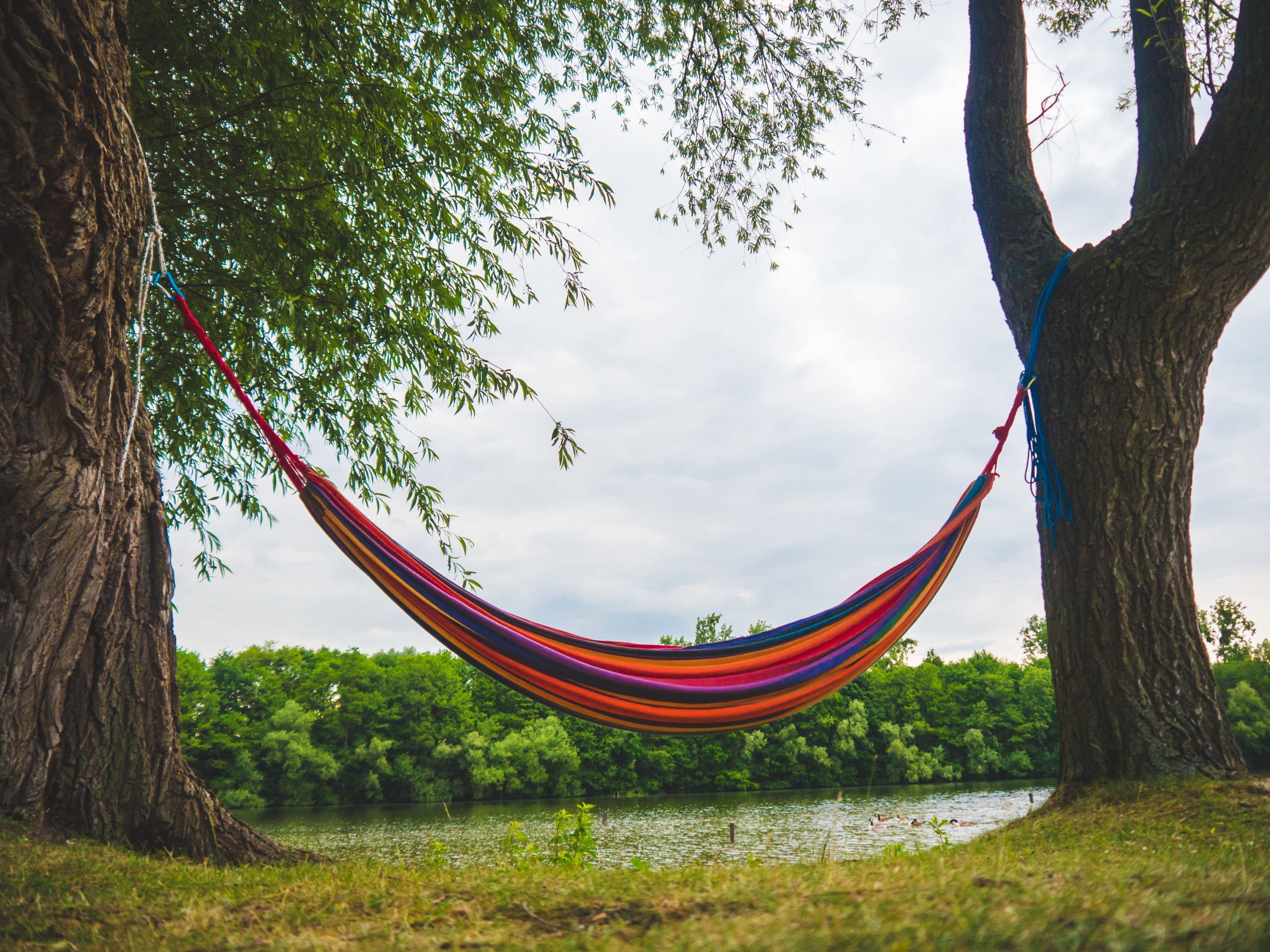
Photo by frederikloewer on Shutterstock
Hammock height is the next consideration. Banana-style hammocks stretch over time, and the weight of the occupant will cause the hammock to sit lower. When using hooks to hang a hammock, installing them at the correct height is important to avoid unnecessary holes in trees. If using tree straps, the straps can be moved up and down as needed.
The average height to hang a hammock is four feet up the tree from ground level. This height may need to be adjusted depending on the hammock and the distance between the trees. An online Hammock Hanging Calculator can give you a more accurate measurement.
Hanging HardwareHammock Straps: Hammock straps are the easiest way to hang a hammock. They can be adjusted as needed, won't damage your trees, and can be taken anywhere which makes them great for camping.
Wrap the strap around the tree. Place the ring on the strap through the loop on the end of the strap and pull it tight. Wrap the strap around the tree a second and perhaps third time. When you are back at the point where the ring was first pulled through the loop, slide the ring over the top layer of the strap and pull down tight. Repeat the same steps on the second tree. Hang the hammock over the hooks, climb in, and relax.
Hammock Hooks: Most hammocks come with large eye-hooks for hanging. Eye-hooks require drilling holes in the trees to install the hooks. You will need to measure the distance from the ground, determine the angle, and then drill a hole slightly smaller than the eye-hook (usually 1/8 or 3/16 inch). Use heavy gloves to turn the eye-hook into the hole as it will turn hard.
You may need to use a large screwdriver or wrench to fully install the eye-hook in the tree. Stop when the eye contacts the tree. Over-tightening the eye-hook can damage and weaken the metal. Drilling a small hole in your tree will not damage the tree.
Once both eye-hooks are installed, slide the chains on each end of the hammock over the hammock hooks. Use the chain links to adjust the hammock height and tautness. A new hammock may seem overly tight after it's first been hung, but the rope and hammock material will stretch some as it’s used.
Rope: Because banana hammocks are light and flexible, they can be hung with rope. Two lengths of strong rope looped around a tree can be used to hold up a banana hammock. This should be used as a temporary hanging method. Spreader-bar hammocks are heavier, and the rope method may not work as well.
Hammock Stands
A hammock stand is the easiest method for supporting a hammock. You can often buy a hammock which comes with a stand or purchase a stand that can be used with any type of hammock. Stands range from cheap to expensive. A cheap stand may not be able to support much weight and may feel a little flimsy. A quality stand will be rather heavy and feel rock solid while swaying in the hammock. Stands come in metal and wood and range from simple to elaborate. The advantage of hammocks stands is that they are portable.

Photo by Tixtis on Dreamstime
Indoor Hammocks
Hammocks can be used inside. Sleeping hammocks are becoming more popular as some people find them very comfortable and they take up almost no space. Hammocks are also just fun to lounge in.

Photo by Vadym Drobot on Alamy
To hang a hammock in a bedroom or other room, you will need some hanging hardware or a hanging kit that can be purchased online or in many hardware or sporting goods stores. You will need to locate two wall studs to hang the hammock from. The easiest way is to go diagonally across a corner of a room. Use the Hammock Hanging Calculator to determine how high up you need to install the hardware. If you are installing a single piece of hardware, such as an eyebolt, try to drill the hole in the center of the stud. A stud finder is the best way to determine the location of a stud. Once the hardware is installed, hang your hammock and gently sway away. You can also hang a hammock from the ceiling by locating beams in the ceiling. You will need to extend the hammock down with additional rope or chain.
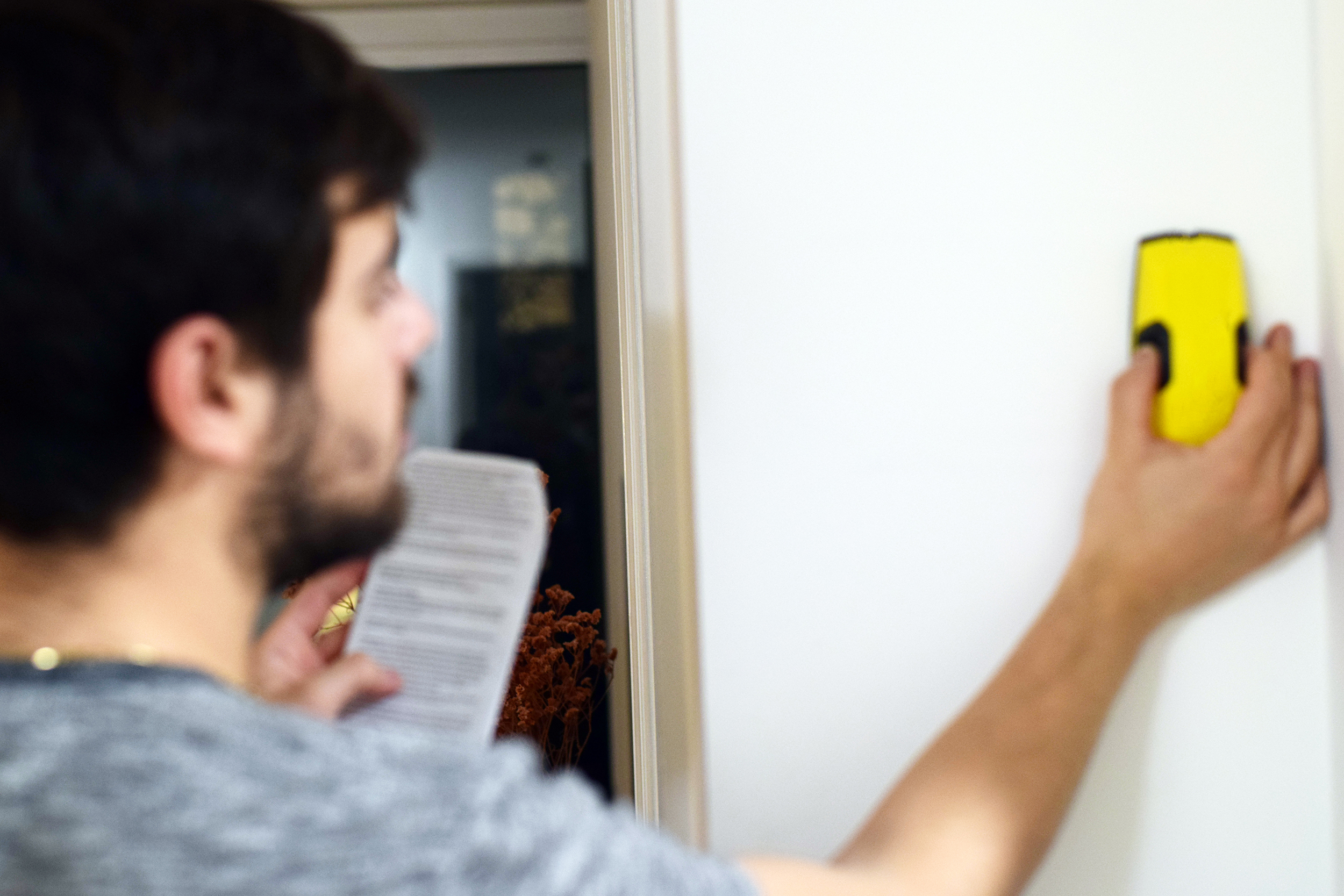
Photo by Cabeca de Marmore on Shutterstock
Hammock Chairs
Hammock chairs can be hung indoors or outdoors. Like hammocks, some come with stands, but most are made to be suspended from a tree branch or rafter.

Photo by Dariusz Jarzabek on Adobe Stock
Tree Branch: To hang a hammock chair from a tree branch, you will need a tree with a sturdy branch. You will also need heavy rope, a strap, or chain to hang the hammock chair. Use a ladder to reach the tree branch. Much like hanging an old fashioned swing, wrap the rope, strap, or chain over the tree branch and let it hang. Fasten the rope, strap, or chain to the eye or eyes in the hammock chair and adjust to the correct height. Before jumping in the chair, test the rope or strap by tugging on it with your full weight. Then test the chair by sitting in it with your feet still solidly on the ground to make sure the hanging method and branch can support the weight. If all feels well, swing away.
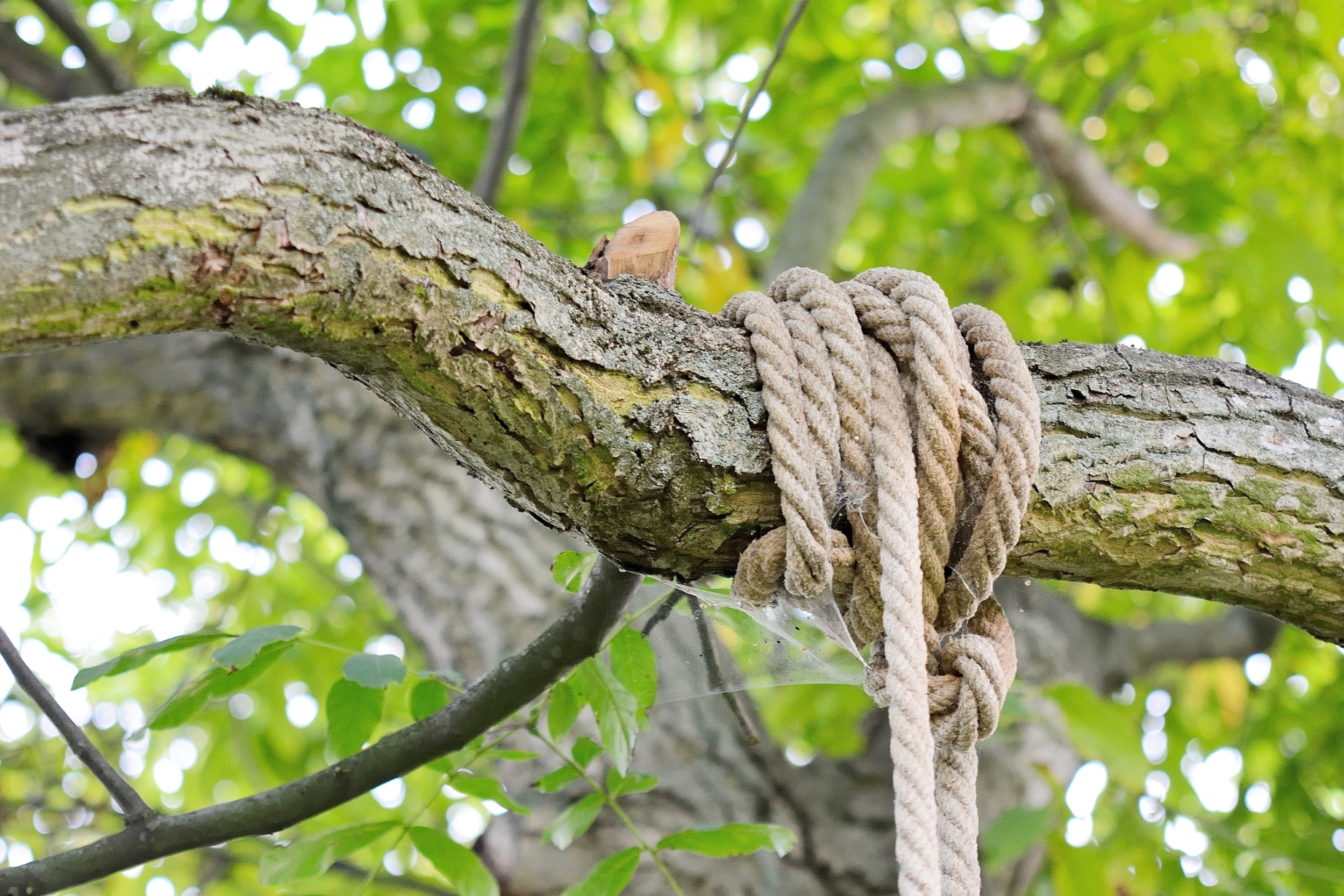
Photo by Hamik on Shutterstock
Inside Your Home: Most hammock chairs come with hanging hardware. If installing the chair inside, you will need to drill a pilot hole into a ceiling beam and install the supplied eye-bolt or hook into the beam. Hang the hammock chair from the bolt or hook using supplied rope or chain. Try to install the chair away from walls so you can swing in it if you desire. You will want to test your hardware and chair before putting your full weight in it. Use the same method for installing over a tree branch.
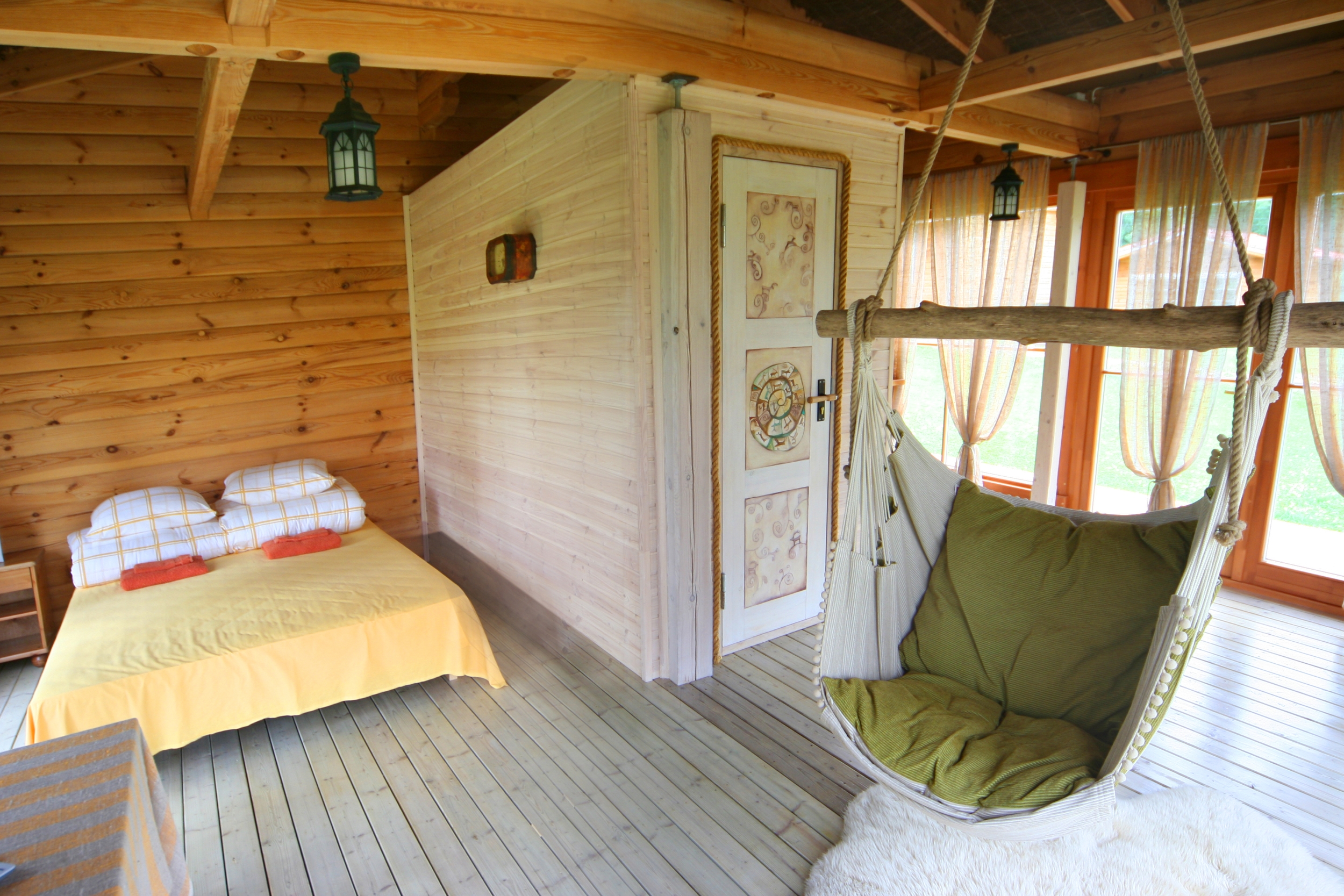
Photo by Foxy_A on Adobe Stock
Porch or Deck: You can install a hammock chair under a covered porch or deck and enjoy your day even if the weather isn’t so great. Much like installing a hammock chair inside, look for a sturdy beam to install the hanging hardware. Give yourself enough space so you are not up against a wall or support post. Test your hardware and beam before kicking back in the chair.
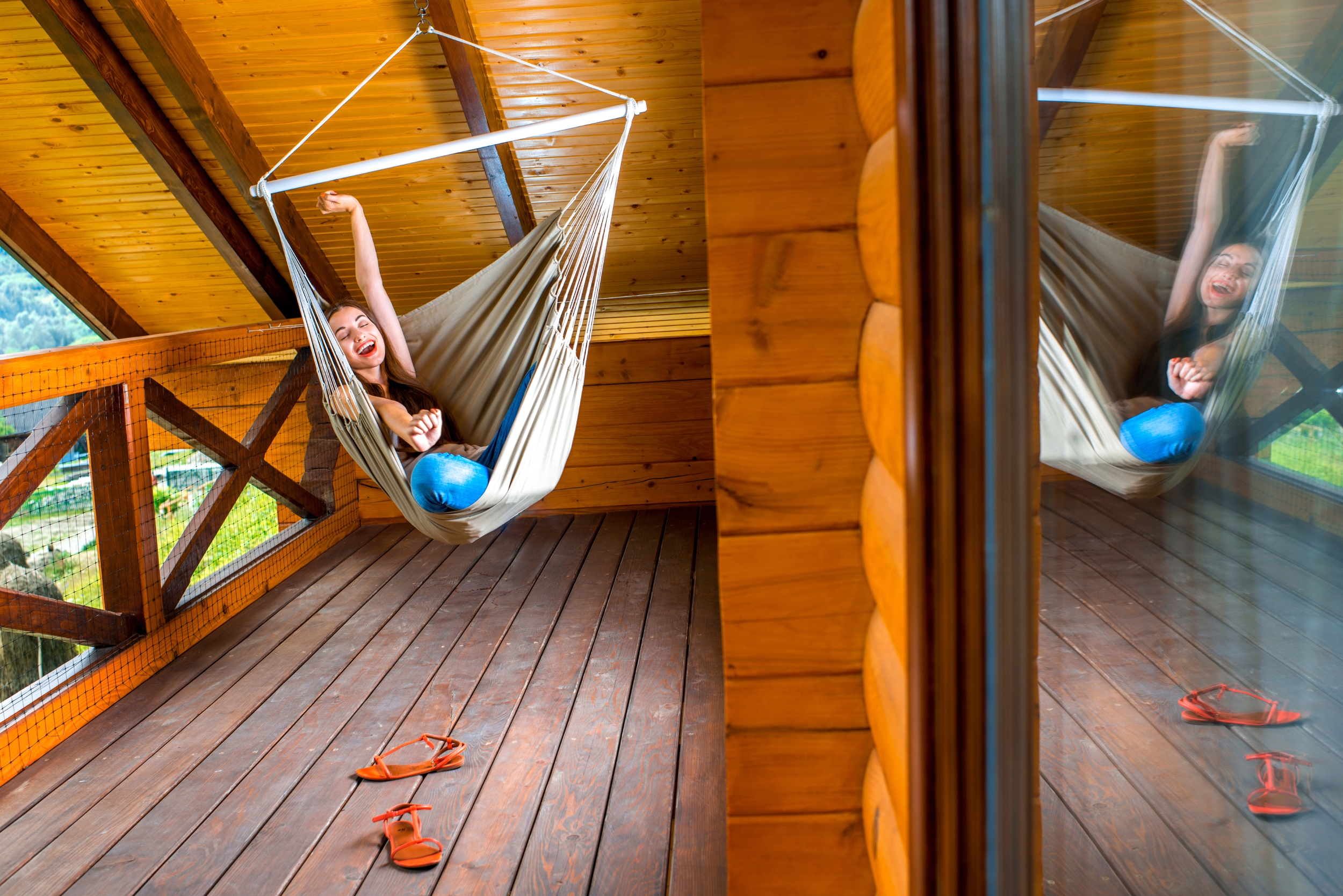
Photo by rh2010 on Adobe Stock
Whether on the beach or in your backyard, a hammock is a great way to enjoy a hot summer’s day. A hammock can hang pretty much anywhere as long as you have sturdy hardware and sturdy supports. Make sure your hammock is strung up right. You don’t want to be at an angle or dragging along the ground as you relax the day away.

Photo by Konstantin Andreev on Alamy




